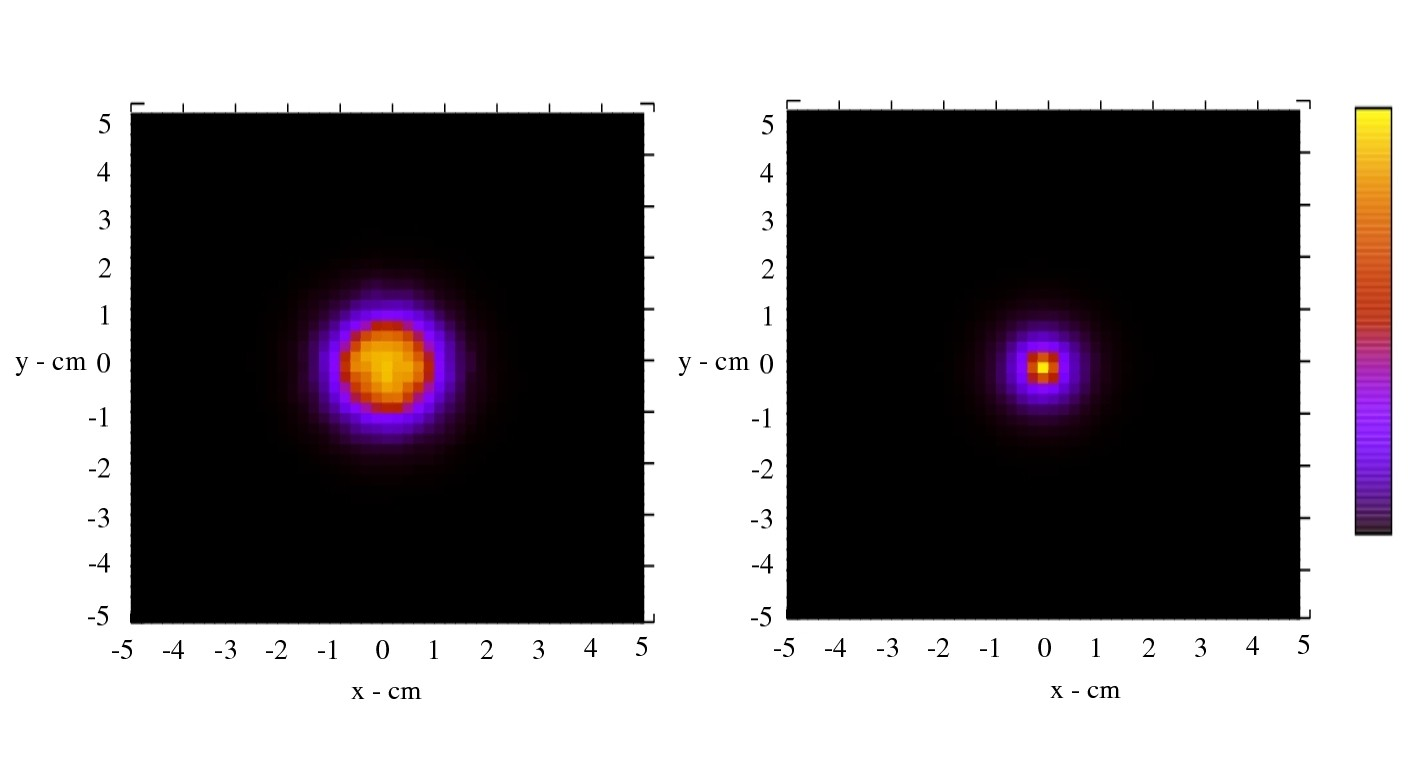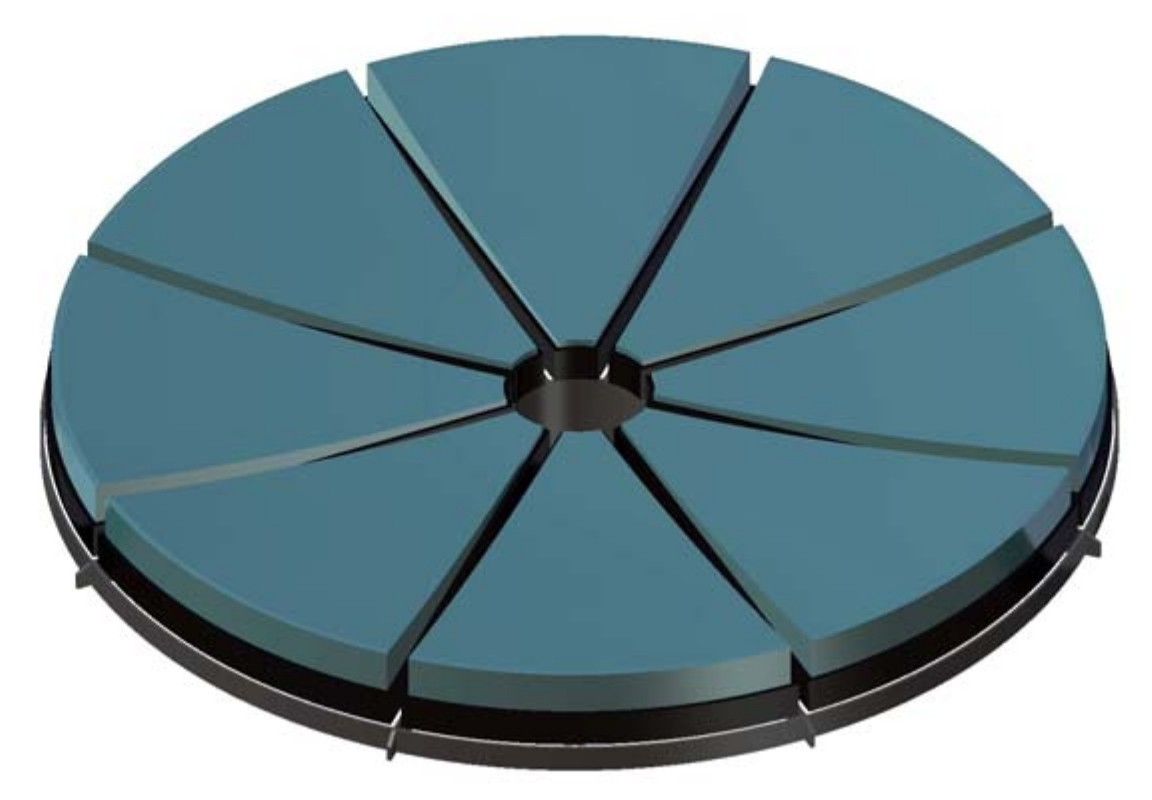The Laue Lens Library, a python code for simulation of Laue lenses for Astrophysical and Terrestrial applications
Focusing X and Gamma rays from astronomical sources represents a step forward for the next generation telescopes that act in the X/gamma ray energy range. To date, astrophysical observations above 80 keV have been only performed by direct-viewing instruments whose sensitivity is limited by the background. Many astrophysical issues are still open in the 70 – 600 keV energy range [1]. A new generation of broad band X-ray focusing telescopes is in a mature stage of development, that will extend the operative energy up to several hundreds of keV. The most efficient technique to focus photons above 80 keV is the Bragg diffraction from crystals, in the transmission configuration (Laue case). In principle, when a photon of energy E impinge on a perfect crystals it is diffracted according to the Bragg law:
| 2 d sin (t) = n hc/E |
In the Laue geometry, a number of small diffractive elements (crystals) are properly oriented and arranged in concentric rings, each ring responsible of a given passband as part of a whole required energy range. Perfect single crystals are not valuable for building Laue lenses given their narrow energy response. Mosaic flat crystals have been already successfully employed [2, 3] for building lenses prototypes but they have shown not competitive performances for space applications, given the imposed physical limit in their Point Spread Function (PSF). Bent crystals [4,5] instead are the ideal elements to cover the entire lens surface by obtaining a continuous energy pass band. They can considerably increase the total lens efficiency with respect to the well known flat mosaic crystals, and at the same time improving the PSF with an unprecedent advantage in terms of angular resolution (Fig. 1). Bent crystals has been studied and succesfully applied to the current project named LAUE [6], supported by the Italian Space Agency (ASI), dedicated to create a technology to build a Laue lens with a focal length of 20 meters, able to focus photons in the 80-600 keV energy band (Fig. 2).
 |
| Figure 1: Comparison betweeen PSF of an entire Laue lens made of flat mosaic crystals (left) and bent mosaic crystals (right). In the second case the total PSF area is considerably diminished, with an enhancement in terms of angular resolution and sensitivity. |
For the design and the expectation of a possible Laue lens for space applications a python code with a number of libraries have been developed. With the Laue Lens Library (LLL) we are capable toentirely simulate the performances of a Laue lens in terms of collecting and effective area, telescope sensitivity and imaging capability through the investigation of the achieved PSF. In particular, the code describes the source of radiation (both point like source or extended source placed at finite distance or at infinite distance as in the astrophysical case) in terms of emitted intensity and spectral shape. The proper lens geometry can be simulated (single crystal tile test, ring of tiles, entire set of rings, spiral configuration) defining the flat or bent crystal shape with mosaic or perfect cristalline structure. The intereaction between the source of radiation and the lens (Monte Carlo ray tracer) is described in terms of probability of interaction. Spectrometry and imaging have also been implemented with the possibility to define the detector efficiency, its energy resolution and the spatial resulution.
 |
| Figure 2: The LAUE project is dedicated to develop a technology for building a Laue lens that take advantage of the modularity concept. A single petal of lens is going to be built at the LARIX laboratory of the Physics and Earth Science Department of the University of Ferrara as a first step, before to build a whole lens for Astrophysical applications. |
- F. Frontera and P. von Ballmoos, “Laue Gamma-Ray Lenses for Space Astrophysics: Status and Prospects”, X-Ray Optics and Instrumentation, 2010. Special Issue on X-Ray Focusing: Techniques and Applications, id.215375, vol. 2010, 2010.
- F. Frontera, G. Lo ff redo, A. Pisa, F. Nobili, V. Carassiti, F. Evangelisti, L. Landi, S. Squerzanti, E. Caroli, J. B. Stephen, K. H. Anderson, P. Courtois, N. Auricchio, L. Milani, and B. Negri. Focusing of gamma-rays with laue lenses: first results. In Society of Photo-Optical Instrumentation Engineers (SPIE) Conference Series, page 7011. SPIE, 2008.
- E. Virgilli, F. Frontera, V. Valsan, V. Liccardo, V. Carassiti, F. Evangelisti, and S. Squerzanti, “Laue lenses for hard x-/soft γ-rays: new prototype results”, in Proceeding of the SPIE conferences, vol. 8147, id. 81471B 9 pp., 2011.
- E. Buffagni, C. Ferrari, F. Rossi, L. Marchini, and A. Zappettini, “Preparation of bent crystals as high- efficiency optical elements for hard x-ray astronomy”, Optical Engineering, vol. 51, p. 056501, May 2012.
- V. Bellucci, R. Camattari, V. Guidi, I. Neri, and N. Barriere, “Self-standing bent silicon crystals for very high efficiency Laue lens”, Experimental Astronomy, vol. 31, pp. 45–58, Aug. 2011.
- E. Virgilli, F. Frontera, V. Valsan, V. Liccardo, V. Carassiti, S. Squerzanti, M. Statera, M. Parise, S. Chiozzi, F. Evangelisti, E. Caroli, J. Stephen, N. Auricchio, S. Silvestri, A. Basili, F. Cassese, L. Recanatesi, V. Guidi, V. Bellucci, R. Camattari, C. Ferrari, A. Zappettini, E. Buffagni, E. Bonnini, M. Pecora, S. Mottini, and B. Negri, “The LAUE project and its main results”, in Proceeding of the SPIE conferences, vol. 8861, id. 886106 17 pp., 2013.
Project cooperators:
- Enrico Virgilli, High Energy Astrophysics group of the Physics and Earth Science Department of Ferrara
- Filippo Frontera, High Energy Astrophysics group of the Physics and Earth Science Department of Ferrara
- Piero Rosati, High Energy Astrophysics group of the Physics and Earth Science Department of Ferrara
- Vineeth Valsan, High Energy Astrophysics group of the Physics and Earth Science Department of Ferrara